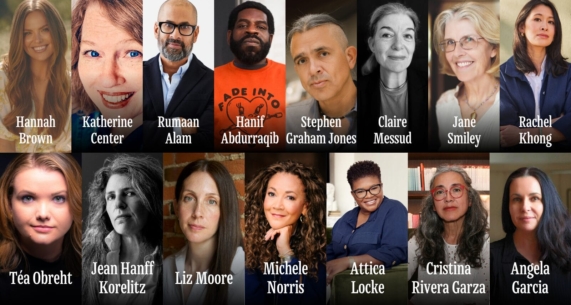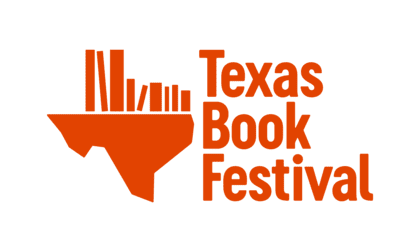Clemente Guzman is the 2021 Texas Book Festival poster artist, and we are honored to feature his work Viva Texas Rivers!. Clemente sat down (virtually) with TBF Deputy Director Claire Burrows to talk about how he became an artist, why he focuses on nature as a subject, and what this particular image means to him.
The Texas Book Festival places great value on the importance and value of storytelling which makes your painting a great choice for our 2021 poster art as the characters in your painting seem to be living different stories at seemingly different points in history. What stories were you hoping to capture? How did you choose who to represent?
When I started this project in conjunction with the book, I was sent stories from different authors that covered many different rivers, like the Red River, Pecos, Comal, Guadalupe…
There was so much in the stories, that I had to create categories to help create clear ideas: plants and trees, activities, relationships, and many more. These categories helped me see themes that I could depict so that I could show how important the rivers are in Texas.
There was so much to work with, and it became a montage of different stories from different authors from different times. I hope it depicts the past, present, and future of Texas rivers.
What is the message you wanted to convey?
Rivers have supported, entertained, and brought us together. I’m personally so moved by this idea, of rivers bringing everything together.
Why are rivers so important to Texas storytelling?
A lot of the places like the Rio Grande, Guadalupe, and Nueces are being changed and destroyed, and we’re losing our natural habitats. We can’t forget that we’ve connected to the rivers, that’s where we came from.
How did you start painting wildlife and nature?
My first painting was actually in seventh or eighth grade, it was a sparrow on a branch. My dad was trying to get me to learn refrigeration as a career, but when I showed him the picture, he liked it a lot. He was impressed.
My family moved to Minnesota, and we worked in the fields. There are a lot of wildlife artists in Minnesota and galleries full of wildlife paintings. I would go to those galleries and be inspired by all this beautiful artwork.
Then a friend introduced me to artist Mario Fernandez, who paints lots of eagles and songbirds. I went to his house and he had original paintings, maybe 25 paintings, all over the house. On the couch, leaning against the walls, everything. I thought, “I could do this. I could make a living as an artist like him.”
What is your artistic process?
When I first start a project, I don’t know what it’s going to look like, I can’t visualize it. I do lots of research to educate myself. I have to learn about the markings of animals at different stages of their lives and where they migrate. I look at lots of other artist renditions of the animals and plants to see how other people have depicted them.
Then I start with simple sketches until I’m happy with the final layout. Then I scan the final sketch into the computer where I keep working on it and adding color.
Each process is a little different, but overall I try to put stories together then simplify. Key is learning how to simplify so it makes sense to someone else looking at it. I try to see it through other people’s eyes.
What is a memorable book or story from your childhood?
I remember a copy of Little Red Riding Hood. It had a bright red cover, beautiful drawings, and simple text. Two other books that stand out to me due to the art are The Fox and the Grapes and Curious George.
We all learn differently, and when I was in elementary school I learned visually and drew lots of pictures, paying attention to details.
What do you like to read today?
About twelve to thirteen years ago, I started studying my family’s genealogy. It started because my grandmother wanted to know more about her father’s family, where did they come from, what were they like. I said, I don’t know but I’ll try to find out. It can be overwhelming, but very interesting, tracing back.
Right now I’m reading Of Texas Rivers & Texas Art by Andrew Sansom.
What else would you like people to know?
I would like everyone to go outside and enjoy a river in your town. Pay respect, enjoy nature. Think, “my ancestors use to work here, live here, swim here.” Simply just go out and appreciate the river. If we all do that, I think we would do more for protecting our natural world.


